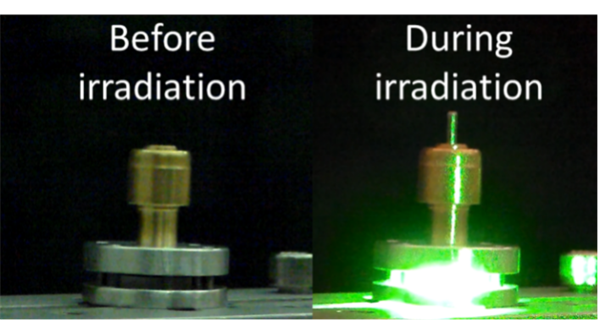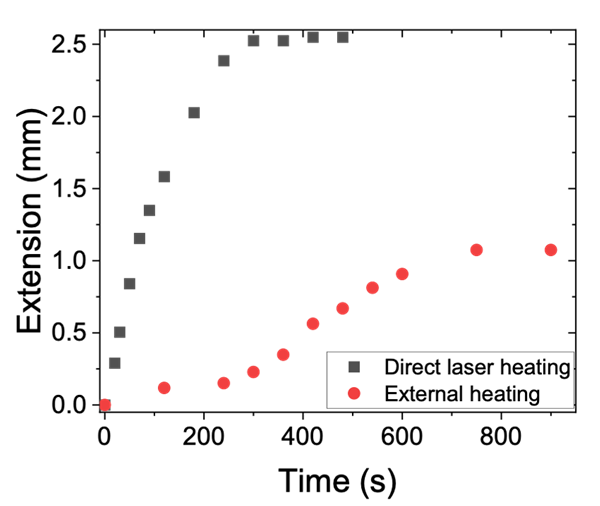Using Small Molecule Absorbers To Create A Photothermal Wax Motor
Patent Status
| Country | Type | Number | Dated | Case |
| United States Of America | Issued Patent | 12398702 | 08/26/2025 | 2022-854 |
Full Description
Background
Phase change materials (PCMs) exhibit expansion upon melting. Wax motors are linear actuators that convert thermal energy to mechanical energy by exploiting the phase change behavior of wax-based PCMs that have high volumetric expansions (up to 20%). In all commercial devices the melting of wax is induced by electric heating. Photothermal heating of PCMs can also be used to generate expansion and mechanical actuation. In previous devices, photothermal actuation has relied on doping the wax with nanoparticles that absorb visible light. In these cases, the long-term stability of the wax-nanoparticle composites is compromised due to the phase separation and aggregation of nanoparticles out of the host wax.
Current Invention
Prof. Christopher Bardeen and his research team at UCR have developed a novel wax motor using small molecules that fit in the interstitial regions of the polycrystalline wax. They have identified highly soluble small molecule absorbers that can absorb light in the visible range and efficiently turn the absorbed photons into heat. The team identified three different small molecule absorbers and focused on guaiazulene (GAZ) since the GAZ absorption extends past 750 nm thereby opening up the possibility of infrared diodes as the photon source.

Image of the GAZ/Eicosane filled wax motor in the "off" (contracted piston) and "on" state (extended piston).

Graph comparing the temporal response and maximum extension due to heating of the wax by direct exposure to light versus resistive heating of the actuator body.
Advantages
The benefits of their GAZ/Eicosane composite material are:
Suggested uses
For wax motors used in:
State Of Development
Lab level prototype built and tested. The team is interested in collaborating with industry in further development of their technology.
Inventions by Prof. Bardeen
Please see all inventions by Prof. Chris Bardeen and his team at UCR
Related Materials
Contact
- Venkata S. Krishnamurty
- venkata.krishnamurty@ucr.edu
- tel: View Phone Number.
Other Information
Keywords
Actuators, Light powered actuators, Photothermal actuators, Photothermal agents, Small molecule, Wax actuator, Wax motor
